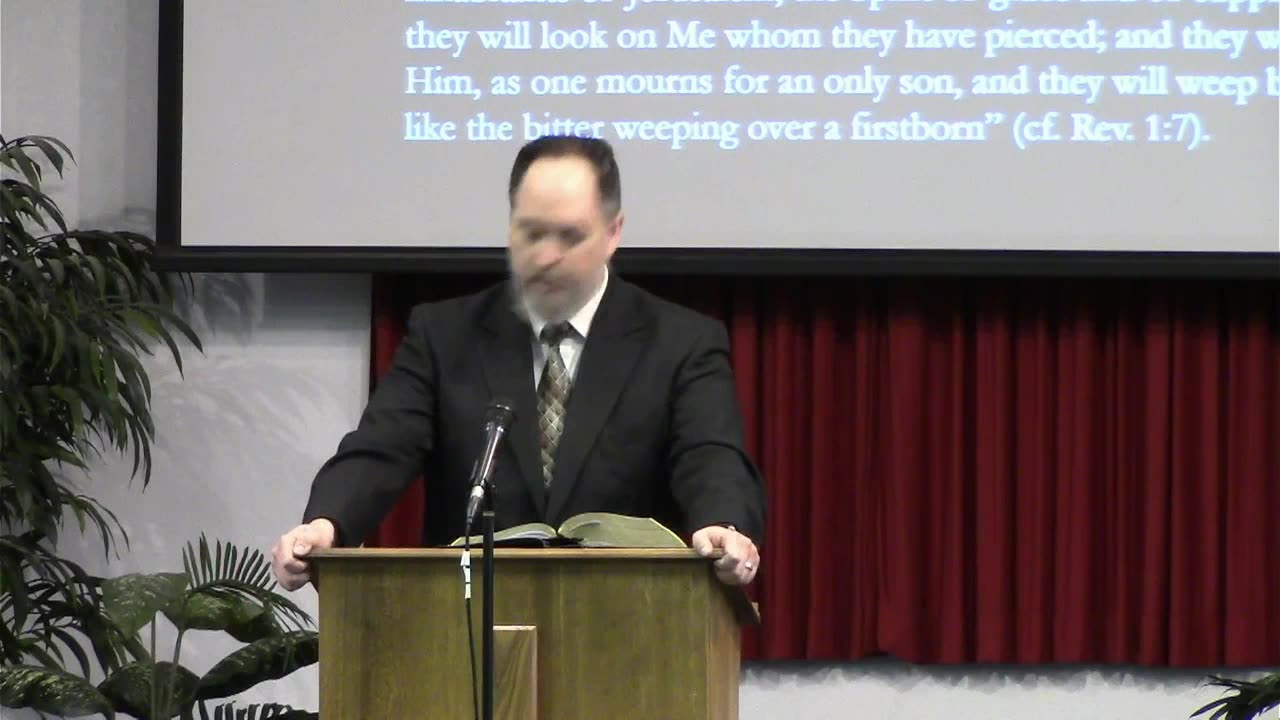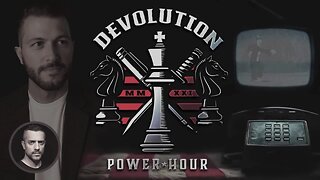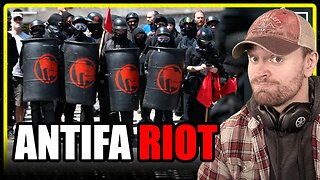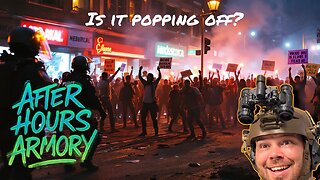Premium Only Content

“The Burial of Jesus” (John 19:31–42)
“The Burial of Jesus” (John 19:31–42)
What is important about Jesus's death and burial? In this passage, we see that it proves the work Jesus came to do, and it means our very salvation.
-Notes: https://pastormarksbury.blogspot.com/2025/05/sermon-burial-of-jesus-john-193142.html
-Livestream: https://lwbcfruita.org/live
-Donations: https://www.lwbcfruita.org/give
MANUSCRIPT:
Series: “John: Life in Christ’s Name” #103
Text: John 19:31–42
By: Shaun Marksbury
Date: May 11, 2025
Venue: Living Water Baptist Church
Occasion: AM Service
I. Introduction
The world may think of the cross as a defeat. Some imagine standing there with the lifeless body of Jesus hanging in silence. They don’t think about the signs, such as the sky darkening, the earth trembling, and even some of the dead coming out of their graves as a precursor of what is to come. No, they reject all that and just think of the crowds dispersing just as Jesus’s disciples did, leaving only the grim task of burial.
Of course, for those with eyes to see, this is not a moment of defeat. Instead, God is signaling something greater to come on that Good Friday. The sight of Jesus triggered something in the centurion to declare that Jesus must have been the Son of God. In this time of apparent loss, two men also step forward from among the Jewish leadership to openly associate with Jesus. Such reactions should give any skeptic pause and to see something far greater than the execution and burial of a condemned man.
Perhaps you are a believer, already accepting the importance of the crucifixion. Yet, moving from that, do you think of the burial of Jesus as merely footnote in the Gospel record? This is a vital chapter in the drama of redemption that God crafted for us. When Paul declares the good news of Jesus in 1 Corinthians 15:4, he includes the fact that Jesus “was buried,” and both the Apostles’ Creed and the Nicene Creed include the truth that Jesus was buried. This confirms that He had a real death which fulfilled biblical prophecies, setting the stage for His glorious resurrection and eventual return and reign.
The irony of this account is that Jesus’s burial confirms who He is. We’ll note three aspects of Christ’s death this morning. We’ll note that this is Jesus’s true death (vv. 31–35), His prophesied death (vv. 36–37), and His royal death (vv. 38–42). Let’s begin with the first of those:
II. First, Jesus’s True Death (vv. 31–35)
Then the Jews, because it was the day of preparation, so that the bodies would not remain on the cross on the Sabbath (for that Sabbath was a high day), asked Pilate that their legs might be broken, and that they might be taken away. So the soldiers came, and broke the legs of the first man and of the other who was crucified with Him; but coming to Jesus, when they saw that He was already dead, they did not break His legs. But one of the soldiers pierced His side with a spear, and immediately blood and water came out. And he who has seen has testified, and his testimony is true; and he knows that he is telling the truth, so that you also may believe.
Last time, as we surveyed the cross, we noted the importance of the death of Christ. We said He died a sacrificial death, died as the king, died bearing shame, died showing compassion, and died fulfilling Scripture. Some of our outline is similar to that today, but we must not skip over the importance that this Gospel account places on the true or real death of Jesus.
Why is the reality of Jesus’s death so important to the Apostle John? The apologetic battles of the end of the first century, when John writes this Gospel, were growing. There was a group that would become known as the Gnostics, those who claimed to have a hidden “knowledge” about the truth of the Gospels, and a particular branch of them called the Docetists, who claimed Jesus only appeared to have a body and die. That seems strange to our ears, as our battles are more with those who believe that Jesus was a regular human, if He existed at all; John is countering those who elevated Jesus’s deity to such a point that they thought Jesus was more of an apparition. So, John provides eyewitness evidence that Jesus was truly human and truly dead.
So, in v. 31, John shifts our focus to the treacherous Jewish leadership. It was their day of preparation, the day before the Sabbath, which began shortly at sundown. This preparation day was significant (a “great one,” cf. Exod. 12:16), for the Sabbath on this year started the Passover festival, marking the first day of Unleavened Bread and the sheaf offering (cf. Lev. 23:11). They are excited about the particular day and rituals associated with it, but they fail to see that God chose this time for His Lamb to be offered as the final sacrifice for both Jewish and Gentile believers. Unbeknownst to them, this was a great Friday for salvation!
Instead, these leaders, ignoring the leaven or impurity of their murderous act at the start of this Unleavened holiday, focused on the ceremonial purity of the land. They know that the Roman practice was to leave bodies rotting on crosses for the birds to consume.[1] Thinking of Deuteronomy 21:22–23, which forbids leaving a body hanging overnight, these men want the sight of their deed removed from view. They were focused more on the leaven in the land than the leaven in their hearts! So, they leave the cross where they have been mocking Jesus and return to Pilate.
They have a gruesome request: to break the legs of the crucified men.[2] This was a practical act that was not common to crucifixion, but also not an unknown act.[3] Because crucifixion was a torturous death that could last for days, the Romans would sometimes break the legs of the condemned to speed up their deaths, an act known as crurifragium. This prevented victims from pushing up with their legs to catch their breath on the cross, leading to asphyxiation.[4] The Jewish leaders request crurifragium to kill Jesus and the others quickly and have their bodies removed before sunset.
Pilate grants this request, sending word to his soldiers in v. 32 — probably the same ones that crucified Jesus.[5] They start with the criminals on either side of Jesus (we’re not reminded in this Gospel, but one of these men died a believer). They were still alive, but Jesus promised the repentant man that he would be with Jesus in paradise “today” (Luke 23:43); Jesus knew that these men would not linger for days on the cross. The soldiers found out that these men were going to die that day, but Jesus already knew it!
Of course, the soldiers were surprised to see that Jesus was already dead, so they didn’t break His legs. Some take this to mean that Jesus was frail, a sensitive soul who taught peace and love and could not hold out long against the cruelty of the Romans. However, as we saw in the language of v. 30, Jesus willingly gave up His spirit. Just as Jesus knew when others were going to die, He knew when He had finished everything He set out to accomplish and willingly laid down His life (cf. John 10:18).
It is interesting that, in this moment, there is another fulfillment of Scripture. By not breaking His legs, the soldiers unwittingly fulfill Scripture. This connects Jesus to the Passover lamb (Exod. 12:46), as we’ll see in v. 36.
One of the soldiers, however, believed that something should be done to verify Jesus’s death. So, v. 34 records that he thrust a spear into Jesus’s side, likely piercing His heart or chest cavity. The immediate flow of blood and water indicates Jesus was truly dead, as living bodies do not produce such a flow.
We might ask John, when we see him in heaven, why he chose to include this detail. There are many theories. The simplest theory here is that John wants us to see that Jesus’s body is truly dead.[6] Perhaps John here counters early heresies like Docetism, which denied Jesus’s humanity. While there are certain physiological realities that could cause this in a person who experiences this kind of trauma, this also speaks spiritually of the salvation that Christ provides, as He typifies the lamb that was pierced and slain.
Of course, that may indicate that there is more theological weight to these. Jesus’s blood is an obvious symbol of the lamb’s blood, where the priest pierced the heart of the animal, and the water might signify the Holy Spirit into Whom we are to be washed and baptized.[7] So, “life and cleansing power come from the blood of Jesus,”[8] and the sacraments of baptism and the Lord’s Supper are testimonies of this fact.[9] Whatever the case, John might have this moment in mind when he penned 1 John 5:6–8 — “This is the One who came by water and blood, Jesus Christ; not with the water only, but with the water and with the blood. It is the Spirit who testifies, because the Spirit is the truth. For there are three that testify: the Spirit and the water and the blood; and the three are in agreement.”
John was an eyewitness, as he says in v. 35. Again, he expects the reader to know that he references himself in the third person; he is the one who has seen and who has testified. The perfect tense of “has testified” underscores the enduring reliability of his account.[10] His testimony is true all these years later not only because he relied on memory, but also because the Holy Spirit inspired him and bought all things back to his mind (as Jesus promised in John 14:26).
John says he wants his readers “to believe.” Jesus’s death was no myth or allegory; it’s historical fact that provides the grounds for our hope in His resurrection. It also assures us that our sins were fully paid for on the cross. As Owen argues, Christ’s death was a “perfect and complete satisfaction” for sin, leaving no debt unpaid (Book I, Chapter 3). Let this truth silence your doubts and draw you to trust in the One who died for you.
Consider how God worked all this out to fulfill His Word, as we turn to the next verses:
III. Second, Jesus’s Prophesied Death (vv. 36–37)
For these things came to pass to fulfill the Scripture, “Not a bone of Him shall be broken.” And again another Scripture says, “They shall look on Him whom they pierced.”
It’s here where we see John connecting Jesus’s death to more Old Testament prophecies, just as he’ done throughout this chapter (e.g., vv. 24, 28). In doing so, John is proving both that Jesus is the Messiah and that God’s plan unfolded with precision. These verses highlight two specific fulfilled Scriptures, in case we missed them earlier.
First, in v. 36, John references biblical teaching that we can find in a number of places. He points us back to the fact that the soldiers failed to break Jesus’s legs, and he mentions something that fulfills the Passover typology. In both Exodus 12:46 and Numbers 9:12,[11] God commands that no bone of the Passover lamb be broken. Jesus, as Paul affirms in 1 Corinthians 5:7, is “our Passover” who was sacrificed for us. Thus, Jesus’s unbroken bones signify His perfection as the spotless Lamb who takes away the sin of the world (John 1:29). There’s more we could say on this,[12] but Jesus fulfills the Passover in every way typologically. The soldiers, unaware of Scripture, acted under God’s sovereign hand to fulfill His Word.
We see this again in v. 37. John here cites Zechariah 12:10, which says in full, “I will pour out on the house of David and on the inhabitants of Jerusalem, the Spirit of grace and of supplication, so that they will look on Me whom they have pierced; and they will mourn for Him, as one mourns for an only son, and they will weep bitterly over Him like the bitter weeping over a firstborn.” The switch in pronouns is fascinating in this verse; Yahweh Himself is being pierced, a stunning pointer to the deity of Christ, but the people will “mourn for Him” (showing a distinction between Father and Son). The piercing of Jesus’s side (v. 34) only fulfills part of this prophecy. John predicts in Revelation 1:7 that “all the tribes of the earth” will see Him and mourn when Jesus returns.
Such fulfilled prophecies in Jesus’s death build our confidence in Scripture and God’s sovereignty, knowing that it all will be fulfilled. Every detail of the cross was foreordained, proving Jesus is the promised Savior. Let this truth anchor your faith: God’s Word is trustworthy, and His plan for your salvation is sure.
Some living at that time understood there was eternal significance in the moment of Jesus’s death, even if they didn’t know everything that was to come to pass. For instance, I mentioned the centurion in the opening who said, “Truly this was the Son of God!” (Matt. 27:54). There are also two other men who pick this time to step forward, against all human reason. Let’s consider them next:
IV. Third, Jesus’s Royal Death (vv. 38–42)
After these things Joseph of Arimathea, being a disciple of Jesus, but a secret one for fear of the Jews, asked Pilate that he might take away the body of Jesus; and Pilate granted permission. So he came and took away His body. Nicodemus, who had first come to Him by night, also came, bringing a mixture of myrrh and aloes, about a hundred pounds weight. So they took the body of Jesus and bound it in linen wrappings with the spices, as is the burial custom of the Jews. Now in the place where He was crucified there was a garden, and in the garden a new tomb in which no one had yet been laid. Therefore because of the Jewish day of preparation, since the tomb was nearby, they laid Jesus there.
We read here of two unlikely figures — Joseph of Arimathea and Nicodemus. One would think that secret disciples of Jesus would see this as a time of defeat, but they step forward to give Jesus a burial fit for a king. They demonstrate that the burial of Jesus is far from a mere formality — it is a royal act of honor that anticipates His resurrection.
Who are these men? Verse 38 introduces us to Joseph of Arimathea (about 20 miles northwest of Jerusalem).[13] MacArthur notes here,
This man appears in all 4 gospels, only in connection with Jesus’ burial. The synoptics relate that he was a member of the Sanhedrin (Matt. 27:57), he was rich (Matt. 27:57), and he was looking for the kingdom of God (Luke 23:51). John treated the idea of secret disciples negatively (see 12:42, 43) but since Joseph publicly risked his reputation and even his life in asking for the body of Jesus, John pictured him in a more positive light.[14]
Joseph, who must have been emboldened by the grace of God, does risk his reputation and life to honor Jesus. He makes his bold request to Pilate, who grants permission. So, Joseph takes Jesus’s body.
Verse 39 reintroduces us to Nicodemus, “who had first come to Him by night” (cf. John 3:1). He had a positive but secret interaction with Jesus, though he didn’t seem to respond at that time. Now, instead of showing caution, he joins Joseph to publicly align with Christ. As one commentary suggests, “Perhaps Nicodemus now understood the teaching of Jesus that He would be lifted up and that a man could look in faith to Him and live (cf. 3:14).”[15]
He brings a hundred pounds or litra (about 75 modern pounds)[16] of myrrh and aloes. This is in alignment with the Jewish burial practices, they wrap Jesus’s body in linen strips,[17] packing the spices to mask the smell of decay.[18] This mirrors Lazarus’s burial (John 11:44) but contrasts with the Shroud of Turin, which is a single cloth. The amount of spices he brings is lavish and extravagant, suitable for a king’s burial.[19]
The urgency of the approaching Sabbath forces a quick burial. So, we read that they place Jesus in a nearby, new tomb. It was hewn from rock of the hillside (Matt. 27:60), and its location in a garden near Golgotha fulfills Isaiah 53:9, which says the Servant would be with the rich in His death. Moreover, that there was no other body in there meant that, when Jesus rises from the grave, there will be no confusion as to whether another body would belong to Him. Joseph’s costly tomb honors Jesus as the true King![20]
They didn’t burn the body or leave it out to decay. The royal burial of Jesus calls us to bold faith and signifies a future hope. Joseph and Nicodemus, once secret disciples, publicly honor Christ at great cost, and their example challenges us to live openly for Jesus, trusting that our labor is not in vain (1 Cor. 15:58). It also points to the His resurrection hope, which we will discuss next time, Lord willing.
V. Conclusion
The burial of Jesus is no mere interlude; it is confirmation of the cross. It demonstrates His true death and confirms the reality of His sacrifice. His prophesied death also fulfills Scripture, proving He is the Messiah and God’s plan is sure. His royal burial honors Him as King and also anticipates a coming empty tomb, giving us hope.
Let the burial of Jesus stir your heart. Your sins were also buried there — laid to rest, never to rise again! If you’ve never trusted Christ, see His real, prophesied, and victorious death as the payment for your sins, believing in Him today. If you’re a believer, let Joseph and Nicodemus inspire you to bold and even costly devotion. And let the empty tomb fill you with hope — Jesus is risen, and because He lives, we too shall live!
_______________________
[1] John MacArthur Jr., Ed., The MacArthur Study Bible, electronic ed., (Nashville, TN: Word Pub., 1997), 1625.
[2] Earl D. Radmacher, Ronald Barclay Allen, and H. Wayne House, The Nelson Study Bible: New King James Version, (Nashville: T. Nelson Publishers, 1997), Jn 19:31.
[3] “In the only known archeological find of a crucifixion, which came to light in 1968, the skeletal remains revealed that the lower legs had been shattered by a single blow.” Edwin A. Blum, The Bible Knowledge Commentary: An Exposition of the Scriptures, 1985, 2, 340.
[4] Ibid.
[5] Ronald L. Trail, An Exegetical Summary of John 10–21, Exegetical Summaries, (Dallas, TX: SIL International, 2018), 424.
[6] MacArthur, 1625.
[7] Biblical Studies Press, The NET Bible First Edition; Bible. English. NET Bible.; The NET Bible, (Biblical Studies Press, 2005).
[8] John D. Barry, Douglas Mangum, Derek R. Brown, Michael S. Heiser, Miles Custis, Elliot Ritzema, Matthew M. Whitehead, Michael R. Grigoni, and David Bomar, Faithlife Study Bible, (Bellingham, WA: Lexham Press, 2012, 2016), Jn 19:34.
[9] John Calvin and William Pringle, Commentary on the Gospel according to John, (Bellingham, WA: Logos Bible Software, 2010), 2:240–241.
[10] Trail, 426.
[11] Also, Exodus 12:10 in the Septuagint, translated over 200 years before Christ, which reads, “οὐκ ἀπολείψετε ἀπʼ αὐτοῦ ἕως πρωὶ καὶ ὀστοῦν οὐ συντρίψετε ἀπʼ αὐτοῦ, τὰ δὲ καταλειπόμενα ἀπʼ αὐτοῦ ἕως πρωὶ ἐν πυρὶ κατακαύσετε” (“And you shall not leave any of it over until morning, and a bone of it you shall not break, but whatever is left of it until morning, you shall burn with fire.”).
[12] For instance, some scholars, like F.F. Bruce, also see a connection to Psalm 34:20, which promises that God protects the righteous man’s bones. Ibid., 428.
[13] Blum, 341.
[14] MacArthur, 1625.
[15] Blum, 341.
[16] New American Standard Bible: 1995 Update, (La Habra, CA: The Lockman Foundation, 1995).
[17] MacArthur, 1625.
[18] Barry, et. al., Jn 19:40.
[19] Ted Cabal, Chad Owen Brand, E. Ray Clendenen, Paul Copan, J. P. Moreland, and Doug Powell, The Apologetics Study Bible: Real Questions, Straight Answers, Stronger Faith, (Nashville, TN: Holman Bible Publishers, 2007), 1613.
[20] A. T. Robertson, Word Pictures in the New Testament, (Nashville, TN: Broadman Press, 1933), Jn 19:41.
-
 1:45:37
1:45:37
Badlands Media
20 hours agoDevolution Power Hour Ep. 395: Controlled Opposition, Government Shutdowns, and Trump’s Wartime Shift
82.9K28 -
 5:41:58
5:41:58
MattMorseTV
7 hours ago $80.84 earned🔴Antifa RIOT vs. Federal OFFICERS.🔴
168K179 -
 1:05:28
1:05:28
Man in America
9 hours agoLIVE: Digital ID & the DEATH of Freedom—An URGENT Warning
28.7K25 -
 40:24
40:24
The Connect: With Johnny Mitchell
1 day ago $1.51 earnedInside The WORST Drug-Infested Slums Of Medellin, Colombia
8.36K4 -
 1:43:56
1:43:56
Tundra Tactical
5 hours ago $3.23 earned🛑LIVE NOW!! FBI Gets Caught LYING About Good Guys With Guns For 10 YEARS!!!!
22.9K1 -

BlackDiamondGunsandGear
2 days agoAFTER HOURS ARMORY / Antifa / Lies/ Prison time
11.8K1 -

DLDAfterDark
5 hours ago $1.35 earnedThe After Hours Armory! Tonight is The Chat's Chat! God, Guns, and Gear!
15.9K1 -
 3:32:18
3:32:18
Mally_Mouse
8 hours ago🌶️ 🥵Spicy BITE Saturday!! 🥵🌶️- Let's Play: Phasmophobia
33.9K3 -
 1:13:19
1:13:19
iCkEdMeL
4 hours ago $7.34 earnedChaos Explodes in Chicago & Portland | Feds Clash with Protesters!
26.7K7 -
 21:54
21:54
Exploring With Nug
1 day ago $7.53 earnedScuba Diving Missing Person Search Leads to Discovery of Classic Cars!
49.5K8
